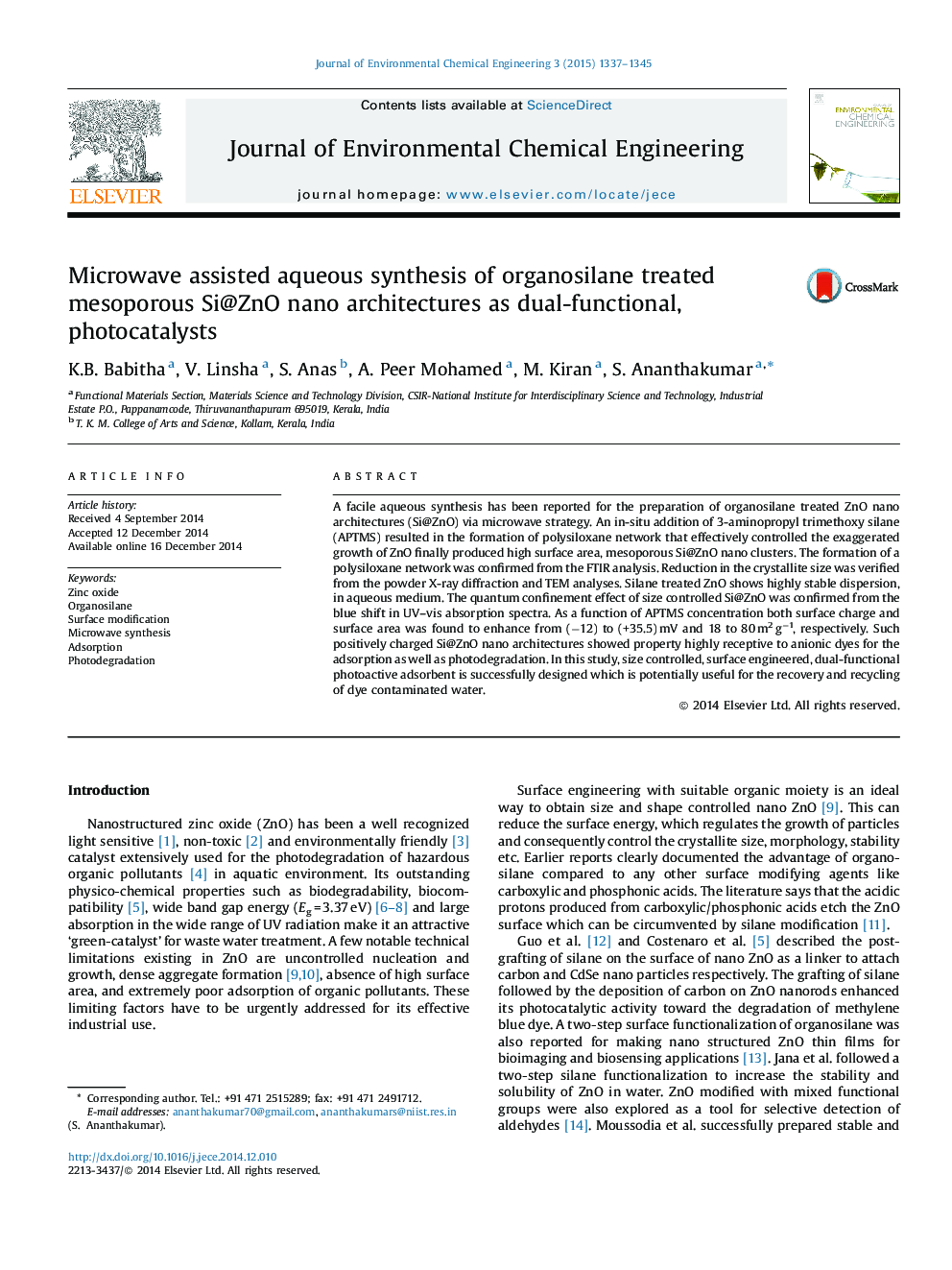| Article ID | Journal | Published Year | Pages | File Type |
|---|---|---|---|---|
| 222364 | Journal of Environmental Chemical Engineering | 2015 | 9 Pages |
•We developed aqueous synthetic route for organosilane treated Si@ZnO nano architectures.•Synthesis is based on the microwave assisted in-situ functionalization strategy.•Characterization techniques suggest the crystallite size reduction.•Surface area enhancement confirms the polysiloxane network around Si@ZnO.•Silane modified Si@ZnO tested for adsorption and photodegradation of EY dye.
A facile aqueous synthesis has been reported for the preparation of organosilane treated ZnO nano architectures (Si@ZnO) via microwave strategy. An in-situ addition of 3-aminopropyl trimethoxy silane (APTMS) resulted in the formation of polysiloxane network that effectively controlled the exaggerated growth of ZnO finally produced high surface area, mesoporous Si@ZnO nano clusters. The formation of a polysiloxane network was confirmed from the FTIR analysis. Reduction in the crystallite size was verified from the powder X-ray diffraction and TEM analyses. Silane treated ZnO shows highly stable dispersion, in aqueous medium. The quantum confinement effect of size controlled Si@ZnO was confirmed from the blue shift in UV–vis absorption spectra. As a function of APTMS concentration both surface charge and surface area was found to enhance from (−12) to (+35.5) mV and 18 to 80 m2 g−1, respectively. Such positively charged Si@ZnO nano architectures showed property highly receptive to anionic dyes for the adsorption as well as photodegradation. In this study, size controlled, surface engineered, dual-functional photoactive adsorbent is successfully designed which is potentially useful for the recovery and recycling of dye contaminated water.
Graphical abstractFigure optionsDownload full-size imageDownload as PowerPoint slide
